How Snowblowers Can Damage Your Concrete Driveway
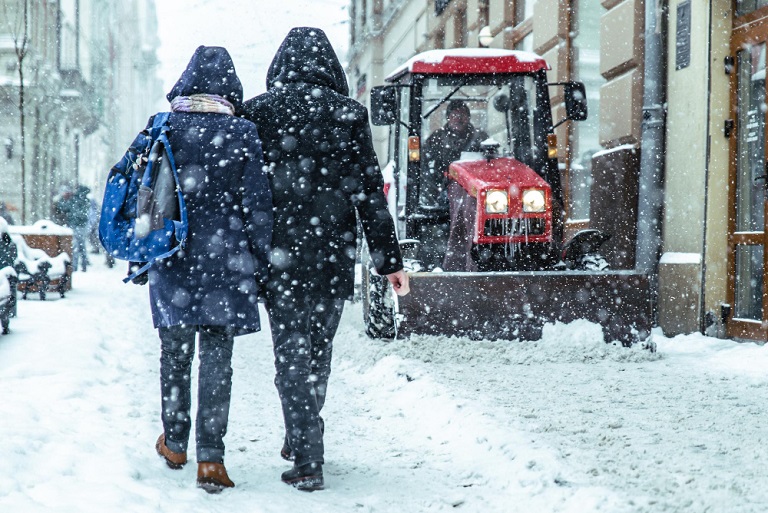
A snow-covered driveway can be a hassle to navigate, especially during harsh winters. A snow blower can be an efficient tool to clear the snow, making your driveway accessible and safe. In this article, we will discuss the proper use of a snow blower for driveway, address concerns about potential concrete damage, and introduce Safe Thaw as a safe winter maintenance solution.
If you live in an area that gets a lot of snow, it can be tempting to use your snowblower to clear the driveway. But if you’re not careful, this can lead to some serious damage to your concrete driveway. In this article, we’ll discuss the most common forms of damage caused by snow blowers to concrete driveways!
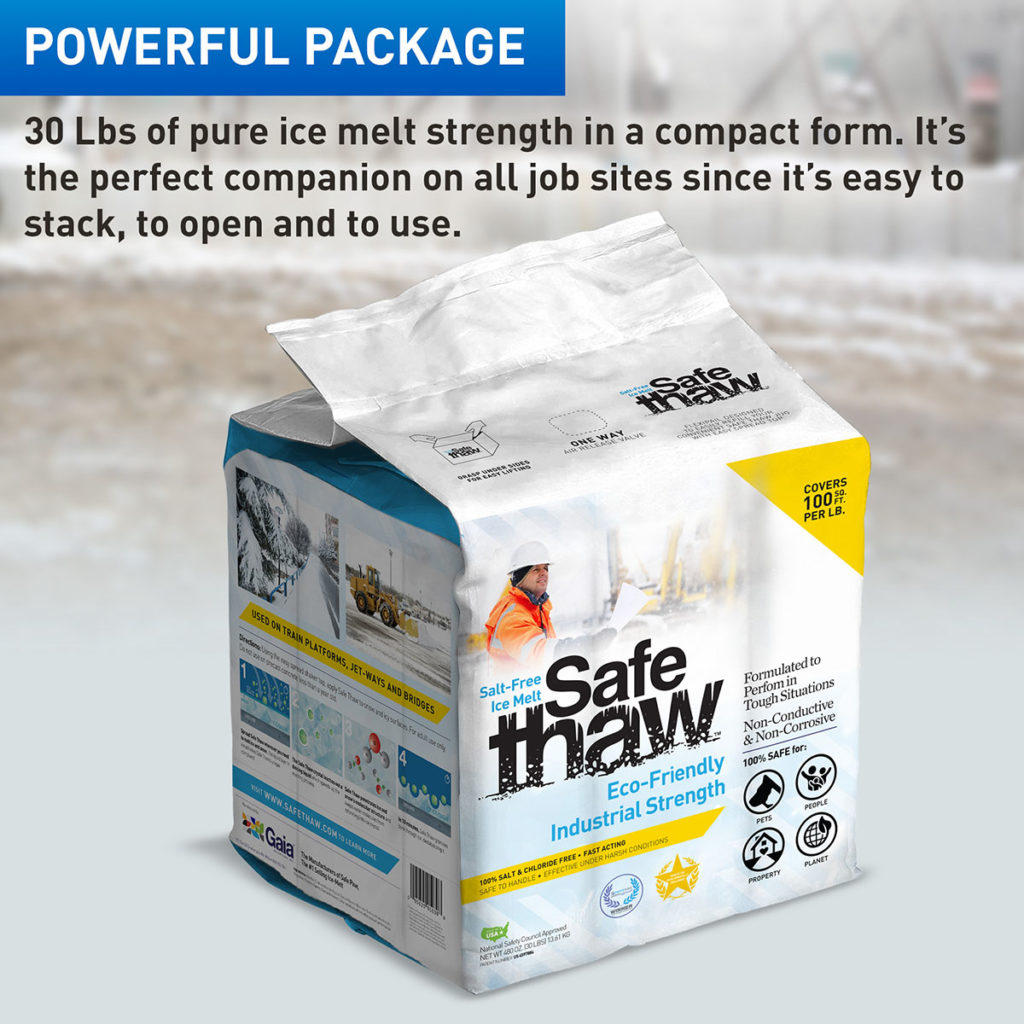
Safe Thaw
Safe Thaw was created as the ice management solution for tough winter environments. Ideal in commercial and industrial properties, shops, government agencies, bridges, and construction.
How to Use a Snow Blower on Driveway:
Follow these steps to effectively use a snow blower on your driveway:
- Read the Manual: Familiarize yourself with the manufacturer’s instructions and safety precautions in the user manual.
- Clear Obstacles: Remove any debris, such as rocks or branches, from your driveway before using the snow blower.
- Dress Properly: Wear warm clothing, gloves, and safety goggles to protect yourself from cold temperatures and flying debris.
- Choose the Right Setting: Adjust your best snow blower for concrete driveway’s height and speed settings based on the depth and type of snow.
- Clear in Rows: Work in parallel rows, overlapping slightly to ensure thorough snow removal.
- Watch for Direction: Aim the snow blower’s discharge chute away from people, cars, and windows to avoid accidents.
How to Repair Damaged Concrete Driveway?
If your concrete driveway has suffered damage due to snow, follow these steps for repair:
- Assess the Damage: Identify cracks, chips, or pits in the concrete surface.
- Clean the Area: Remove debris and clean the damaged area with water and a mild detergent.
- Fill Cracks: Use a concrete repair caulk or filler to seal cracks and chips.
- Smooth the Surface: After filling, smooth the surface with a trowel and allow it to dry.
- Seal the Concrete: Apply a concrete sealer to protect the repaired area and prevent future damage.
Common Forms of Damage Caused by Snow Blowers to Concrete Driveways!
Scarring: Scarring is a common problem caused by the snow blower’s impeller and can be repaired. Scarring is a shallow, narrow groove that can be taken care of by grinding and then repolishing the concrete. It’s not as bad as cracking or heaving, but scarring is still something you want to take care of as soon as possible.
Cracking: Concrete is a composite material made of sand, gravel, and cement. It’s strong but it can succumb to cracking or spalling if subjected to extreme stress. One of the most common ways for concrete cracks to form is when there are vibrations in the area where you’re standing (or sitting) as you walk or run around on your driveway during snowy days. Snowblowers create vibrations that can cause cracks in your driveway over time—and once they start forming, there’s no repairing them without replacing all of the affected concrete sections of your driveway.
Heaving: The surface of your concrete driveway is likely already damaged by the stress of weather, traffic, and other factors. However, it can be further deteriorated by a snowblower. It occurs when the weight of the snowblower pushes down on the surface and creates heaving in the concrete. Heaving is when the concrete rises and becomes uneven, creating bumps and dips which are incredibly difficult to repair. In such conditions, you must keep your snowblower off your driveway so as not to cause further damage or distress!
Rock Salt Damage To A Concrete Driveway: Not only snow blowers but traditional rock salts can cause crumbles and cracks in your concrete driveway. To prevent this damage and keep your driveway looking great, ensure that you’re using the right ice melt. Then how to melt ice on concrete without salt?
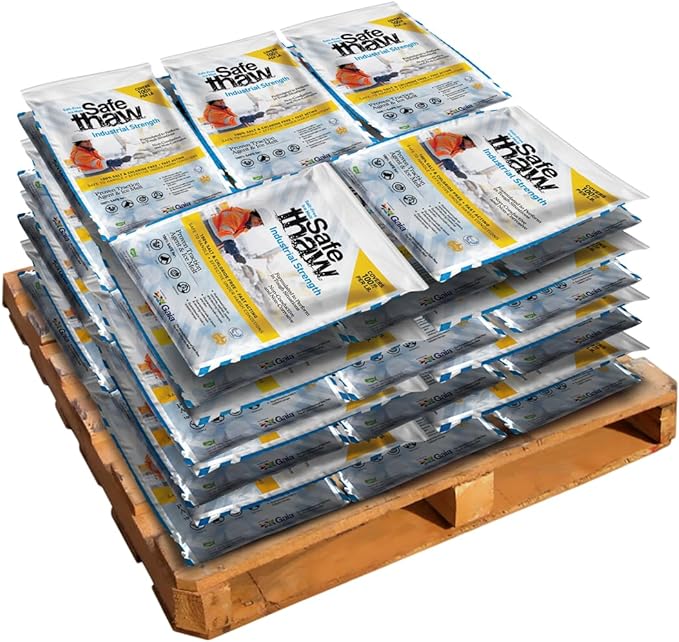
40 Bags
Safe Paw Thaw Industrial Strength Salt-Free Pet Safe Snow Ice Melter and Traction Agent for Concrete, Asphalt, Decks, Lawns, and More, 43 Pound Bag- 40 Bags

100 Boxes
Safe Thaw Industrial Strength 100% Salt/Chloride-Free, Pet/Paw-Safe Snow & Ice Melter and Traction Agent. Use on Concrete, Asphalt, Roofs & On Any Surface, 30 Pound FlexiPail- 100 Boxes
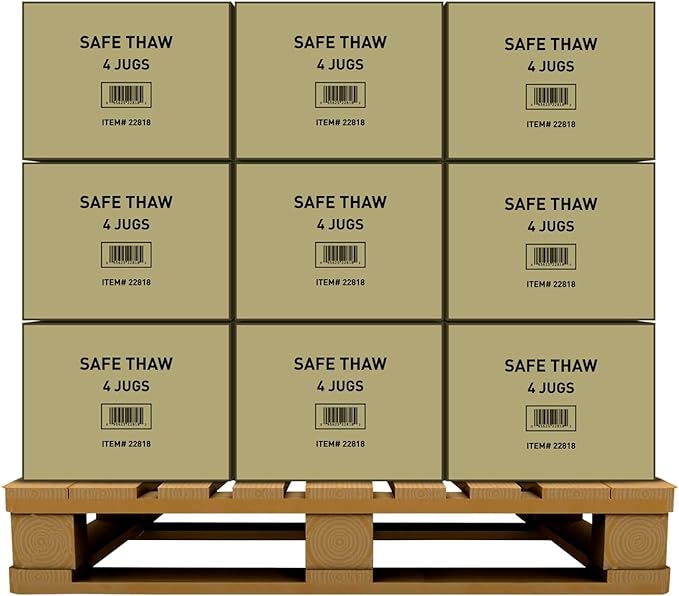
105 Jugs
Safe Thaw Concrete Safe 100% Salt-Free, Pet Safe Snow and ice Melter, Industrial Strength, Chloride-Free, and Traction Agent. Use on Asphalt, Roofs & On Any Surface, 10 Pound Jug- 105 Jugs
Post-Winter Inspection and Repair of Concrete Driveways
Once winter is over, inspecting your driveway for any potential damage caused by snow removal equipment is essential for maintaining its longevity.
Identify Surface Damage
Check for signs of scratches, chips, or cracks. Minor surface damage, such as scaling, can often be repaired with concrete resurfacing products. Understanding the difference between concrete spalling and scaling helps determine the appropriate repair method.
Repair Minor Issues Promptly
Small cracks or chips can escalate into larger problems if not addressed. Use a high-quality patching compound or resurfacer to restore the integrity of your driveway. For extensive damage, consider using concrete resurfacing products designed for heavy-duty repairs.
Reapply Sealants
Applying a sealant after winter protects your driveway from future damage caused by moisture and deicing chemicals. Reapplying sealants every two to three years ensures continuous protection.
Preventing Future Damage with the Right Practices
By adopting preventative measures and proper techniques, you can minimize the risk of snowblower-induced damage to your driveway:
- Use Eco-Friendly Deicers: Products like Safe Thaw are ideal for protecting concrete surfaces.
- Maintain Equipment: Regularly inspect and replace worn-out parts of your snowblower.
- Avoid Excessive Pressure: Adjust the snowblower’s height to prevent direct contact with the concrete surface.
Exploring the Best Roof Ice Melt System Options
Now that we’ve covered the risks snowblowers and traditional deicers pose to your concrete driveway, it’s worth expanding the conversation to your roof. After all, ice buildup doesn’t just happen at ground level—it can wreak havoc up top as well. So, what’s the snow melt system for roof to keep snow and ice from causing leaks, cracks, or dangerous ice dams?
For pitched roofs, a simple strategy often involves installing heating cables along the eaves. These cables prevent ice dams by keeping meltwater flowing steadily off the roof instead of refreezing at the edges. But here’s the catch: they don’t work as a stand-alone solution. Heating cables require significant energy, and when combined with chloride-based products, the risk of corrosion rises quickly. This is where switching to a chloride-free product like Safe Thaw becomes vital—it protects not only your roof surface but also the gutters, nails, and fixtures that are most prone to salt damage.
Flat roofs are even more challenging. Because water tends to pool on flat surfaces, a flat roof snow melt system often involves a layered approach: a heated membrane beneath the roofing material combined with effective snow removal and eco-friendly deicers. Safe Thaw plays a role here too, because it doesn’t corrode membranes, tar, or sealants the way chlorides do. For commercial properties with flat roofs, relying on safe deicing agents makes the difference between routine maintenance and costly structural repairs.
Driveway Ice Melt Systems and Winter Longevity
It’s easy to focus on roof protection and forget that your driveway still faces a daily battle with snow and ice. That’s where the idea of a driveway ice melt system comes in. Instead of over-relying on machinery like snowblowers, which we already know can scar or crack concrete, many property managers install hydronic or electric heating systems directly under the surface. These systems warm the concrete just enough to prevent ice from bonding tightly.
But let’s be honest—most people can’t afford to retrofit an entire driveway with underground heating. Even when such systems are installed, they aren’t always efficient during record-low temperatures. Pairing them with an eco-friendly surface product like Safe Thaw creates a layered defense: the heating element loosens ice, while the non-toxic granules of Safe Thaw accelerate melting and prevent refreeze. Unlike salt, it won’t seep into cracks and worsen freeze-thaw cycles. This hybrid approach extends the lifespan of your driveway while maintaining year-round safety.
And here’s a tip many overlook: even with the best heated driveway or roof system, you still need a reliable deicer to cover the spots those systems miss. Corners, shaded areas, or high-traffic patches where snow compacts faster often benefit from direct application of Safe Thaw, which draws heat from the sun and works without corrosive side effects.
Practical Considerations Before Investing
So how do you decide whether to invest in the best roof ice melt system or a driveway ice melt system? Ask yourself three questions:
- What’s the risk level for your property?
If your roof collects heavy snow or you regularly see ice dams forming, a snow melt system combined with Safe Thaw might save you thousands in water damage repairs. - What’s the traffic volume on your driveway?
Commercial and industrial spaces with constant vehicle movement benefit from combining under-surface heating with chloride-free deicers. For residential spaces, Safe Thaw alone may be sufficient. - What’s your budget and energy capacity?
Heated systems are long-term investments with high upfront costs. Safe Thaw offers immediate protection at a fraction of the price, especially when purchased in bulk for larger properties.
This perspective shows that while technology plays a huge role, the chemistry of the deicer you choose still determines whether your surfaces remain intact or slowly degrade every winter.
100% salt & chloride-free, fast acting Ice Management Solution
Conclusion: A Smarter Way to Protect Roofs and Driveways
Snowblowers, while convenient, can leave lasting scars on your driveway, and traditional salts add another layer of damage. Extending this concern to rooftops and driveways, it’s clear that even the best roof ice melt system or flat roof snow melt systems need support from chloride-free solutions. Similarly, while driveway ice melt systems provide structural protection, they can’t function optimally without a safe deicer on the surface.
Safe Thaw bridges that gap. Its unique, non-corrosive formula works with or without advanced heating systems, giving property owners peace of mind. Whether it’s a steep metal roof, a flat commercial rooftop, or a high-traffic driveway, Safe Thaw ensures that ice is managed safely without sacrificing the longevity of your property.
At the end of the day, investing in systems is valuable, but investing in the right product is essential. Safe Thaw stands as the most reliable solution for industrial, commercial, and residential applications, guaranteeing safety without the hidden costs of salt damage.
FAQs
Try Also Our Other Winter Safety Products:
Traction Magic
Stay safe on slippery surfaces with a product that’s 100% natural and safe for pets, people, and your property. Whether it’s sidewalks, steps, or even your car’s traction, Traction Magic is the go-to choice.
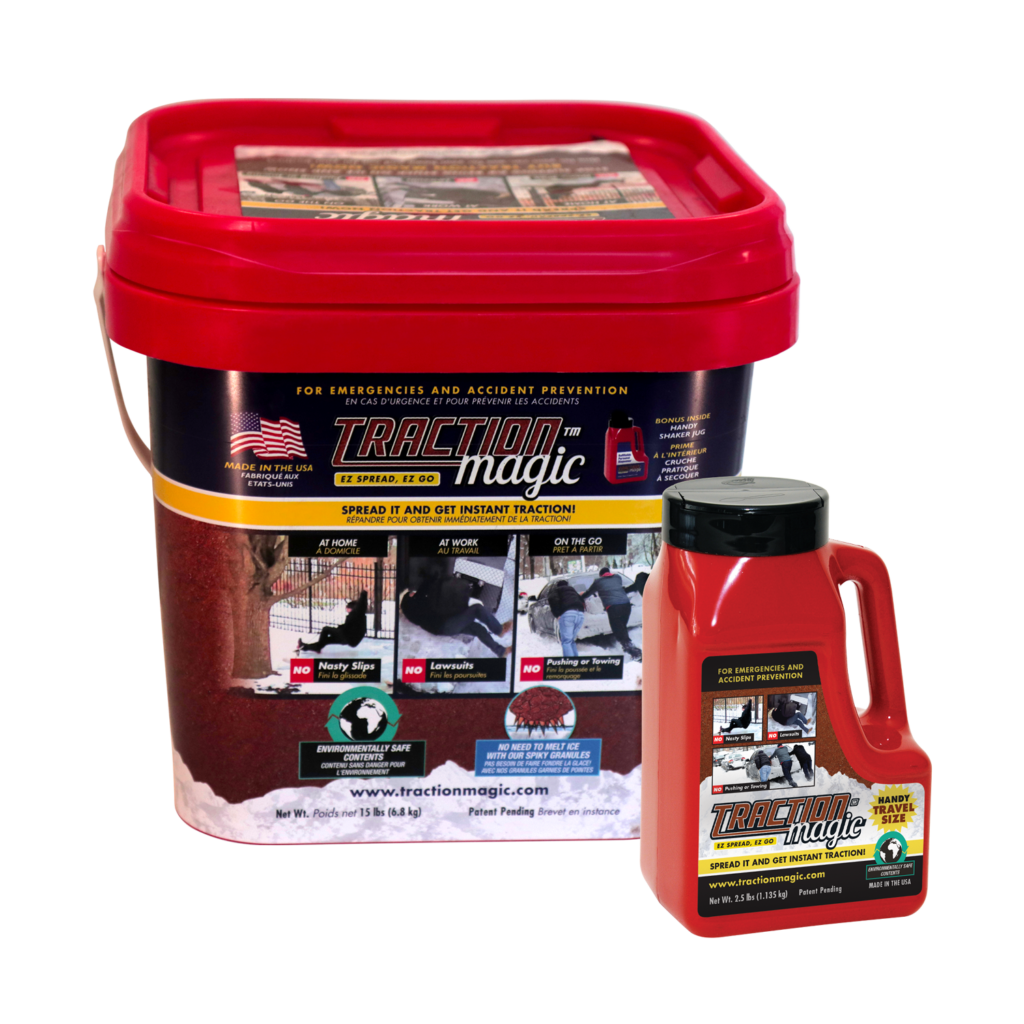
Walk On Ice
The handy disposable canister can be taken everywhere, with the same 100% naturally occurring minerals that provide instant traction on ice or snow. Use it on sidewalks, steps, or as an instant traction agent for your car.



